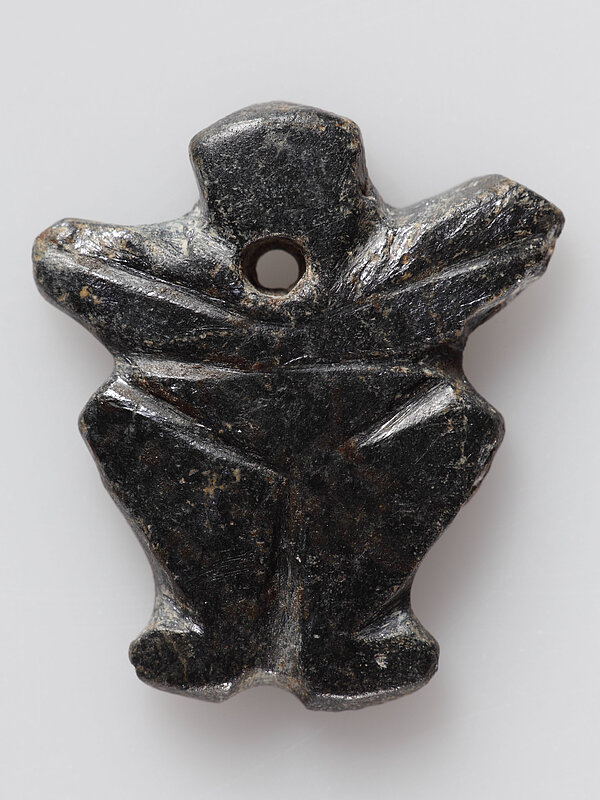Neolithic Imagery
Starting point of the studies on Neolithic Imagery are the excavated objects depicting anthropomorphic and zoomorphic figures as well as fantastic creatures at Çukuriçi Höyük (Türkiye) and in Svinjarička Čuka (Serbia), both representing pioneers in early to middle Neolithic periods.
The variety of imagery increased with the Neolithisation process in southwest Asia and the Balkans starting between 9500 to 6000 calBC. The imagery of these early farmers and herders offer a new insight into their worldviews going beyond everyday-life practices and subsistence. The study of these Neolithic statuettes, figurines, pendants and decorative elements is contextualised with the Neolithisation process and the socio-cultural aspects of this transformation. The complex and multi-levelled meanings of these artistic objects are reflected in the differences in symbolism of the sex, gender and nature of the creatures as well as in their archaeological contexts.
Imagery from Çukuriçi Höyük (Türkiye)
New symbolic representations increase at the site after the pioneer phase around 6700calBC including figurines and amulets, although they are altogether representing a small number in relation to the other regions. One of the recovered (and already published) pendants represents a female figure with distinct accentuated sexual characteristics, specifically the emphasized pelvis and highlighted pubic triangle. The arms are in relief without visible hands or fingers and are bended underneath the invisible breasts. Short legs in a slightly outward direction end in oval side-facing feet. The short rectangular-shaped head does not show any internal facial grooving and remains plain with a fine polished surface. The figure is only 2cm long and of high quality. It displays fine grooves and scratches, and was most likely manufactured using an obsidian blade, with the hardness of the stone material requiring such a tool.
This astonishing miniature female figure is reminiscent of the well-known female/divine figures from Hacılar and Çatalhöyük, for example, as well as other schematic depictions in Anatolia and the Aegean in the 7th millennium. Comparable concepts are detectable in standing statuettes made of clay recovered in Late Neolithic western Anatolia, such as in Ulucak IV and Barcın Höyük VIa–b. The object from Çukuriçi is pierced in the upper part and most likely used as a pendant, at least secondarily.
Figurines from Svinjarička Čuka (Serbia)
A characteristic aspect of the prehistoric Balkans is represented in the impressive amounts of imagery produced. The Neolithic communities associated with the Starčevo horizon at Svinjarička Čuka practised a presumably local production of clay figures, symbolizing humans, animals or potentially numinous creatures. The human-like (anthropomorphic) and small-sized figures dominate the spectrum of the clay sculptures. The S. Čuka community frequently produced schematic imagery, mostly represented in two types of human-like figurines: female figures with an over-estimated sculpted pelvis and upper legs, a quite schematic body and head without elaborated faces in sitting or standing positions. The sex-related aspects are highly elaborated, mainly with female figures, as demonstrated by the remains of a pregnant woman in a seated position. Male or sex-neutral figures with cylindrical or flat bodies are commonly created with an abstract bird-like face, perhaps imitating a face mask as known from later Vinča-dated sites.
Literature
B. Horejs, Migrating and creating social memories. On the arrival and adaptation of the Neolithic in Aegean Anatolia, in: M. Brami – B. Horejs (eds.), The Central/Western Anatolian Farming Frontier. OREA 12 (Vienna 2019) 159–179.
B. Horejs – M. Brandl – B. Milic – C. Burke, First Farmers in south Serbia, in: B. Horejs – M. Gavranovic (eds.), Visualizing the Unknown Balkans-Vizualizacija nepoznatog Balkana. (Vienna 2020) 15–32.
Principal investigator
Duration
2023—
Funding
OeAW-OeAI


